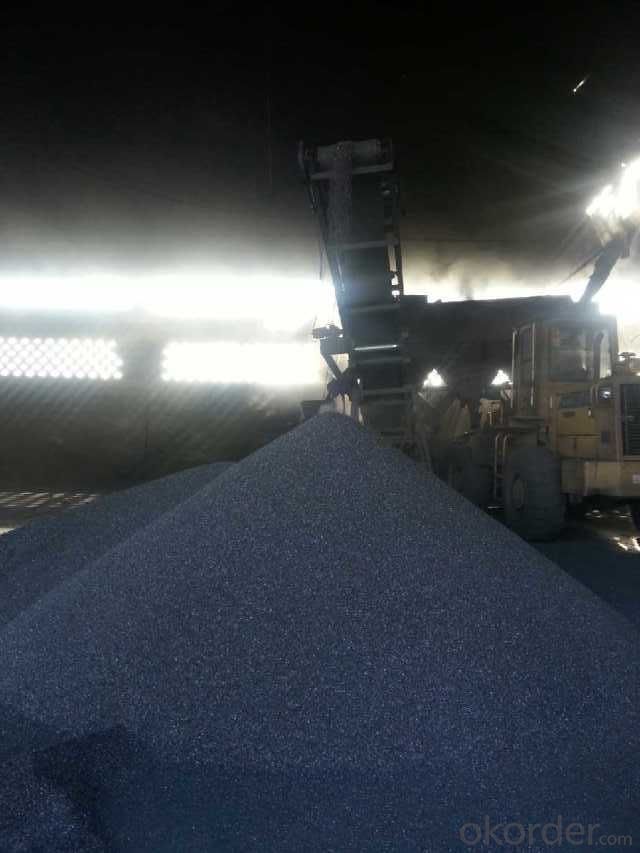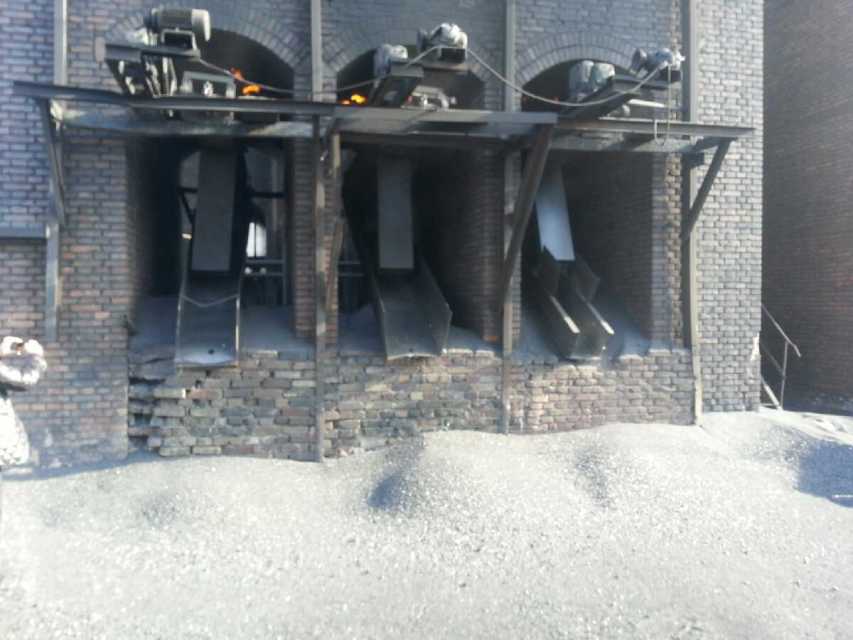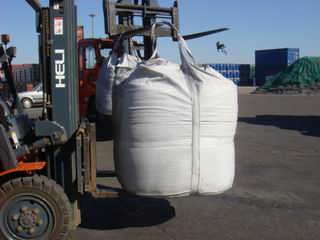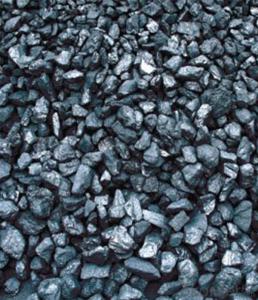FC 92% Carbon additive
- Loading Port:
- China Main Port
- Payment Terms:
- TT OR LC
- Min Order Qty:
- -
- Supply Capability:
- -
OKorder Service Pledge
OKorder Financial Service
You Might Also Like
Package:
in MT bags
in 25KG bags
or as buyer's request
Specifications
Calcined Anthracite
Fixed carbon: 90%-95%
S: 0.5% max
Size: 0-3. 3-5.3-15 or as request
Calcined Anthracite is produced using the best Anthracite-Taixi Anthracite with low S and P, It is widely used in steel making and casting, Chemical and some other fields.
General Specification of Calcined Anthracite:
PARAMETER UNIT GUARANTEE VALUE | |||||
F.C.% | 95MIN | 94MIN | 93MIN | 92MIN | 90MIN |
ASH % | 4MAX | 5MAX | 6MAX | 7MAX | 8MAX |
V.M.% | 1 MAX | 1MAX | 1.5MAX | 1.5MAX | 1.5MAX |
SULFUR % | 0.5MAX | 0.5MAX | 0.5MAX | 0.5MAX | 0.5MAX |
MOISTURE % | 0.5MAX | 0.5MAX | 0.5MAX | 0.5MAX | 0.5MAX |
Size can be adjusted based on buyer's request.
Pictures of Calcined Anthracite:




- Q:What's the difference between an alkaline cell and a carbon cell?
- 3. Alkaline batteries, also called alkaline dry cells, are suitable for large capacity and long time use. The internal resistance of the battery is low, so the current produced is larger than that of the general zinc manganese battery, while the environmental protection type mercury content is only 0.025%, and no recycling is needed. Based on his environmental protection, and the current characteristics of large, so now alkaline battery more.4. In the final analysis, the essential difference between a carbon cell and an alkaline cell is the internal material. In short, carbon battery consists of carbon, zinc skin composition, but its internal cadmium and mercury, is not conducive to environmental protection, but it is cheap, so there is a space for one person in the market, and the alkaline battery no pollution of heavy metal ions, high current, conducive to environmental protection, is the future development direction of the battery!
- Q:What are carbon nanotubes?
- Carbon nanotubes, characterized by their unique structure, are cylindrical formations made solely of carbon atoms. These nanotubes, aptly named due to their minuscule diameter of a few nanometers, can attain remarkable lengths of several centimeters. The distinctive structure of carbon nanotubes grants them extraordinary properties. They exhibit exceptional strength and mechanical characteristics, surpassing steel by a factor of 100 while only weighing one-sixth as much. Furthermore, they possess remarkable thermal and electrical conductivity. Categorically, carbon nanotubes can be classified into two primary types: single-walled carbon nanotubes (SWCNTs) and multi-walled carbon nanotubes (MWCNTs). Single-walled nanotubes consist of a solitary layer of rolled carbon atoms, whereas multi-walled nanotubes comprise several layers of these nested formations. The exceptional properties of carbon nanotubes enable their diverse applications across numerous fields. In the realm of electronics, their high electrical conductivity renders them suitable for use as transistors and interconnects. Additionally, their substantial surface area and electrical conductivity make them ideal for incorporation into energy storage devices like batteries and supercapacitors. Within materials science, carbon nanotubes reinforce composites, enhancing their strength and reducing their weight. Moreover, they exhibit potential applications in medicine as drug delivery systems and imaging agents. Ongoing research endeavors strive to deepen our understanding and harness the potential of carbon nanotubes. Nonetheless, challenges persist regarding their large-scale production, cost-effectiveness, and possible health and environmental ramifications. Overall, carbon nanotubes represent an exhilarating and promising domain of nanotechnology, offering vast possibilities for advancements in various fields.
- Q:What are the long-term effects of increased carbon emissions on ecosystems?
- Increased carbon emissions have significant long-term effects on ecosystems. One major consequence is the disruption of the Earth's climate system, leading to more frequent and intense extreme weather events such as hurricanes, droughts, and heatwaves. This can result in habitat destruction, loss of biodiversity, and increased vulnerability of species to extinction. Furthermore, elevated carbon dioxide levels in the atmosphere can contribute to ocean acidification, which harms marine ecosystems and disrupts the delicate balance of marine life. Overall, the long-term effects of increased carbon emissions on ecosystems are detrimental and pose a grave threat to the health and stability of our planet's natural systems.
- Q:What is the role of carbon in the corrosion of metals?
- The role of carbon in the corrosion of metals is primarily as a catalyst or facilitator for corrosion processes. Carbon, in the form of carbon dioxide (CO2) or carbonic acid (H2CO3), can react with moisture in the atmosphere to form carbonic acid, which is a weak acid. This weak acid can then react with metal surfaces, initiating the corrosion process. When carbonic acid comes into contact with a metal, it can cause a chemical reaction known as carbonic acid corrosion or acid attack. This reaction involves the dissolution of metal ions into solution and the formation of metal oxide or metal hydroxide products. The presence of carbon in the form of carbon dioxide or carbonic acid can accelerate the corrosion rate by providing an electrolyte and lowering the pH of the environment, making it more corrosive. Furthermore, carbon can also participate in galvanic corrosion, which occurs when two dissimilar metals are in contact with an electrolyte. Carbon, in the form of graphite, can act as a conductor, allowing the flow of electrons between the two metals. This can create an electrochemical cell, leading to accelerated corrosion of the less noble metal. In addition to these direct roles, carbon can indirectly contribute to metal corrosion through the formation of corrosion products such as carbonates or bicarbonates. These compounds can accumulate on the metal surface, leading to the formation of a protective or non-protective corrosion layer. Depending on the specific conditions, this layer can either hinder or enhance the corrosion process. Overall, carbon plays a significant role in the corrosion of metals by acting as a catalyst, facilitating the formation of corrosive environments, participating in galvanic corrosion, and influencing the formation of corrosion products. Understanding the role of carbon is crucial in developing effective corrosion prevention and mitigation strategies.
- Q:What is carbon offsetting in aviation?
- Carbon offsetting in aviation refers to the practice of compensating for the greenhouse gas emissions produced by aircraft by investing in projects that reduce or remove an equivalent amount of carbon dioxide from the atmosphere. This voluntary measure aims to mitigate the environmental impact of air travel by supporting initiatives such as renewable energy projects or reforestation efforts.
- Q:when to use hard carbon, and when to use soft carbon. Neutral charcoal can play what role? Thank you.
- The soft carbon strokes are more black and easier to use. The hard charcoal painted gray, the color is not deep, when painting and sketch paper friction is relatively large, there is a general feeling of rustling, veteran can feel it.Soft charcoal most used in a black or a black screen most places, such as shadow, Terminator...
- Q:What are the different types of carbon-based plastics?
- There are several different types of carbon-based plastics, each with unique properties and applications. Some common types include: 1. Polyethylene (PE): This is the most widely used plastic and can be found in various forms such as high-density polyethylene (HDPE) and low-density polyethylene (LDPE). PE is known for its strength, flexibility, and resistance to chemicals, making it suitable for applications like packaging, pipes, and toys. 2. Polypropylene (PP): PP is another popular plastic known for its high melting point, chemical resistance, and durability. It is commonly used in automotive parts, appliances, and packaging. 3. Polystyrene (PS): PS is a rigid plastic that is often used in disposable products like food containers and packaging materials. It is lightweight and has good insulation properties. 4. Polyvinyl Chloride (PVC): PVC is a versatile plastic that can be rigid or flexible depending on its formulation. It is commonly used in construction materials, pipes, cables, and vinyl flooring. 5. Polyethylene Terephthalate (PET): PET is a strong and lightweight plastic that is commonly used in beverage bottles, food packaging, and textile fibers. It is known for its excellent gas and moisture barrier properties. 6. Polycarbonate (PC): PC is a transparent plastic known for its high impact resistance and heat resistance. It is often used in eyewear, automotive parts, and electronic devices. These are just a few examples of carbon-based plastics, and there are many other variations and blends available in the market. The choice of plastic depends on its intended application, desired properties, and environmental considerations.
- Q:What are the impacts of carbon emissions on wildlife?
- Carbon emissions have a significant impact on wildlife as it contributes to climate change, leading to habitat loss, changes in migration patterns, and increased vulnerability to disease and extinction. Additionally, the acidification of oceans due to increased carbon dioxide levels affects marine life, disrupting food chains and damaging coral reefs. Overall, carbon emissions pose a grave threat to the survival and well-being of various species.
- Q:How does carbon form?speed
- How is coal formed?Coal is known as black gold, the food industry, it is one of the main energy use of the human world since eighteenth Century. Although its important position has been replaced by oil, but in the future for a long period of time, due to the exhaustion of petroleum, inevitable decline, but because of the huge reserves of coal, and the rapid development of science and technology, the new technology of coal gasification is becoming more mature and widely used, coal will become one of the production and life of human beings in an irreplaceable energy.Coal is millions of years of plant leaves and roots, stacked on the ground with a layer of very thick black humus, due to changes in the earth's crust constantly buried underground, long isolated from the air and under high temperature and pressure, after a series of complex physical and chemical changes and other factors, the formation of black however, this fossil, is the coal forming process.The thickness of coal seam in a coal mine and the crust drop speed and accumulation amount of plant remains. The crust decreased rapidly, the plant remains piled thick, the coal seam is thick, on the other hand, the crust decline slowly, the accumulation of plant remains thin, the mine coal seam is thin. The tectonic movement of the crust to the original level of coal seam folds and faults occur, some underground coal seam buried deeper, and squeezed to the surface, even above the ground, more likely to be found. There are some relatively thin coal seam, and the area is not large, so there is no value related to the formation of coal mining, so far not find the update statement.
- Q:What are the effects of carbon emissions on the stability of ice shelves?
- Carbon emissions have significant effects on the stability of ice shelves. As carbon dioxide (CO2) and other greenhouse gases are released into the atmosphere, they trap heat and contribute to global warming. This increased global temperature leads to the melting of ice shelves and glaciers. One of the primary effects of carbon emissions on ice shelves is the acceleration of their melting rates. Higher atmospheric temperatures cause more ice to melt, which in turn increases the amount of water flowing into the ocean. This added influx of freshwater can disrupt the delicate balance between the ice shelf and the ocean, potentially leading to ice shelf collapse. Additionally, carbon emissions contribute to the thinning of ice shelves. As the atmosphere warms, the air temperature above the ice shelves rises, leading to increased surface melting. This meltwater then flows into crevasses and cracks, causing further fracturing and weakening of the ice shelves. Over time, this thinning can make the ice shelves more susceptible to breaking apart. The melting of ice shelves due to carbon emissions also has indirect effects on the stability of surrounding ice sheets. Ice shelves act as a buttress, providing resistance to the flow of ice from the glaciers into the ocean. When ice shelves collapse or thin, this resistance is diminished, allowing glaciers to flow more freely into the ocean. This process leads to increased sea level rise, which has significant implications for coastal regions around the world. Furthermore, the loss of ice shelves can disrupt the ecosystem and biodiversity of the surrounding areas. Ice shelves provide a platform for various species, including seals and penguins, to breed and feed. When ice shelves disintegrate, these habitats are destroyed, impacting the entire food chain and ecosystem dynamics. Overall, carbon emissions from human activities have profound effects on the stability of ice shelves. The melting, thinning, and collapse of ice shelves contribute to rising sea levels, disrupt ecosystems, and have far-reaching consequences for coastal communities. It is crucial to mitigate carbon emissions and take proactive measures to protect these vulnerable ice shelves and the delicate balance they maintain in our global climate system.
1. Manufacturer Overview |
|
|---|---|
| Location | |
| Year Established | |
| Annual Output Value | |
| Main Markets | |
| Company Certifications | |
2. Manufacturer Certificates |
|
|---|---|
| a) Certification Name | |
| Range | |
| Reference | |
| Validity Period | |
3. Manufacturer Capability |
|
|---|---|
| a)Trade Capacity | |
| Nearest Port | |
| Export Percentage | |
| No.of Employees in Trade Department | |
| Language Spoken: | |
| b)Factory Information | |
| Factory Size: | |
| No. of Production Lines | |
| Contract Manufacturing | |
| Product Price Range | |
Send your message to us
FC 92% Carbon additive
- Loading Port:
- China Main Port
- Payment Terms:
- TT OR LC
- Min Order Qty:
- -
- Supply Capability:
- -
OKorder Service Pledge
OKorder Financial Service
Similar products
New products
Hot products




























